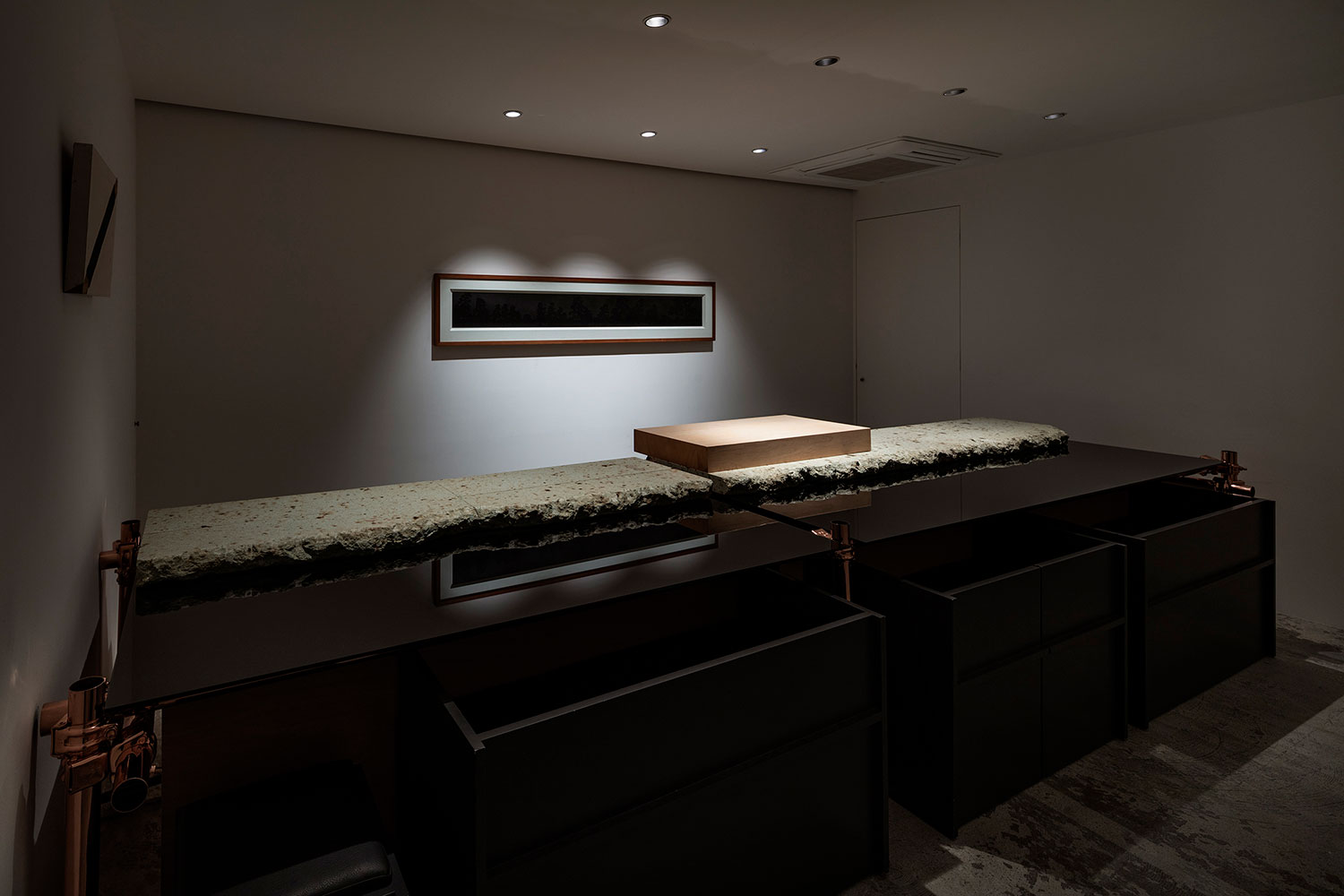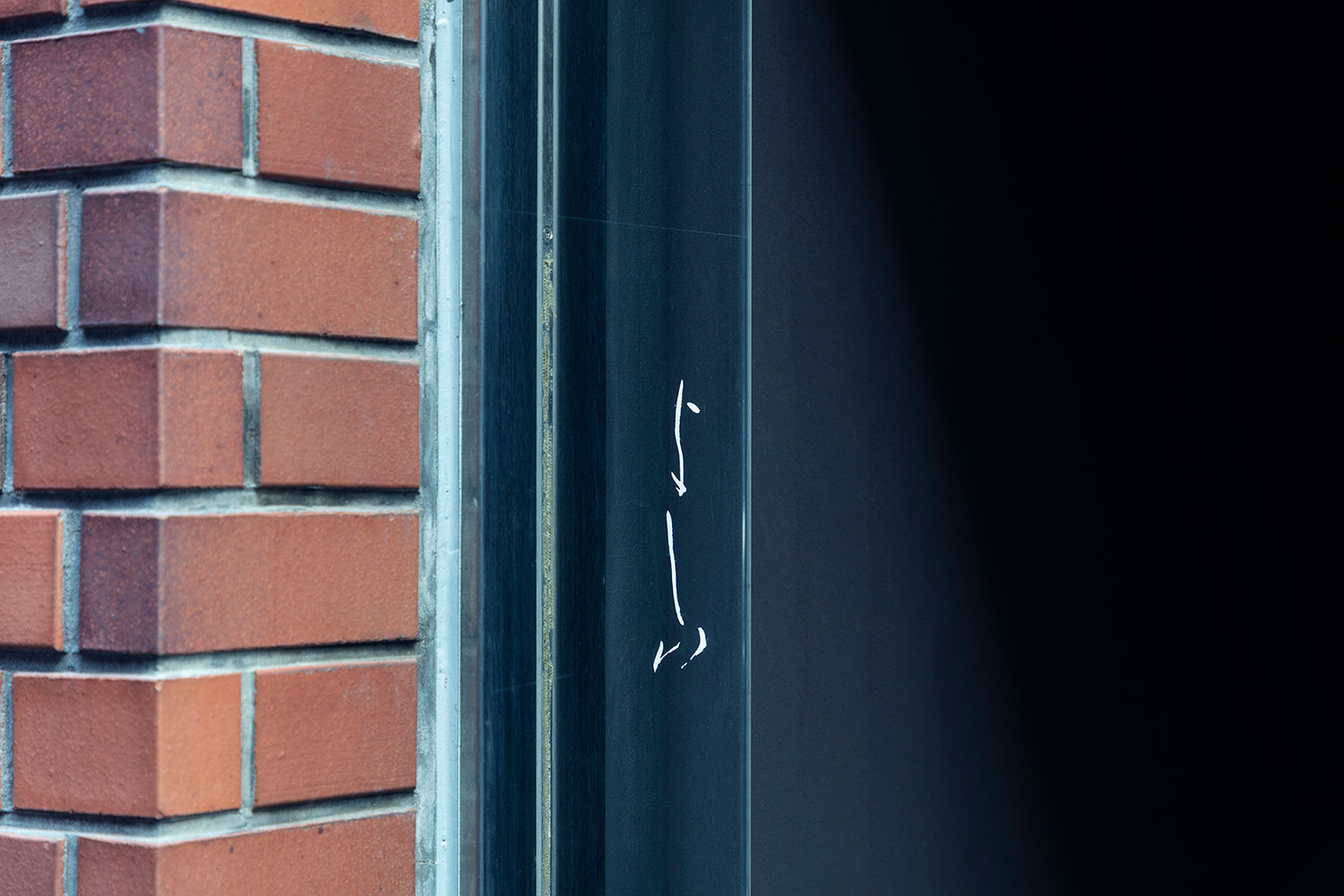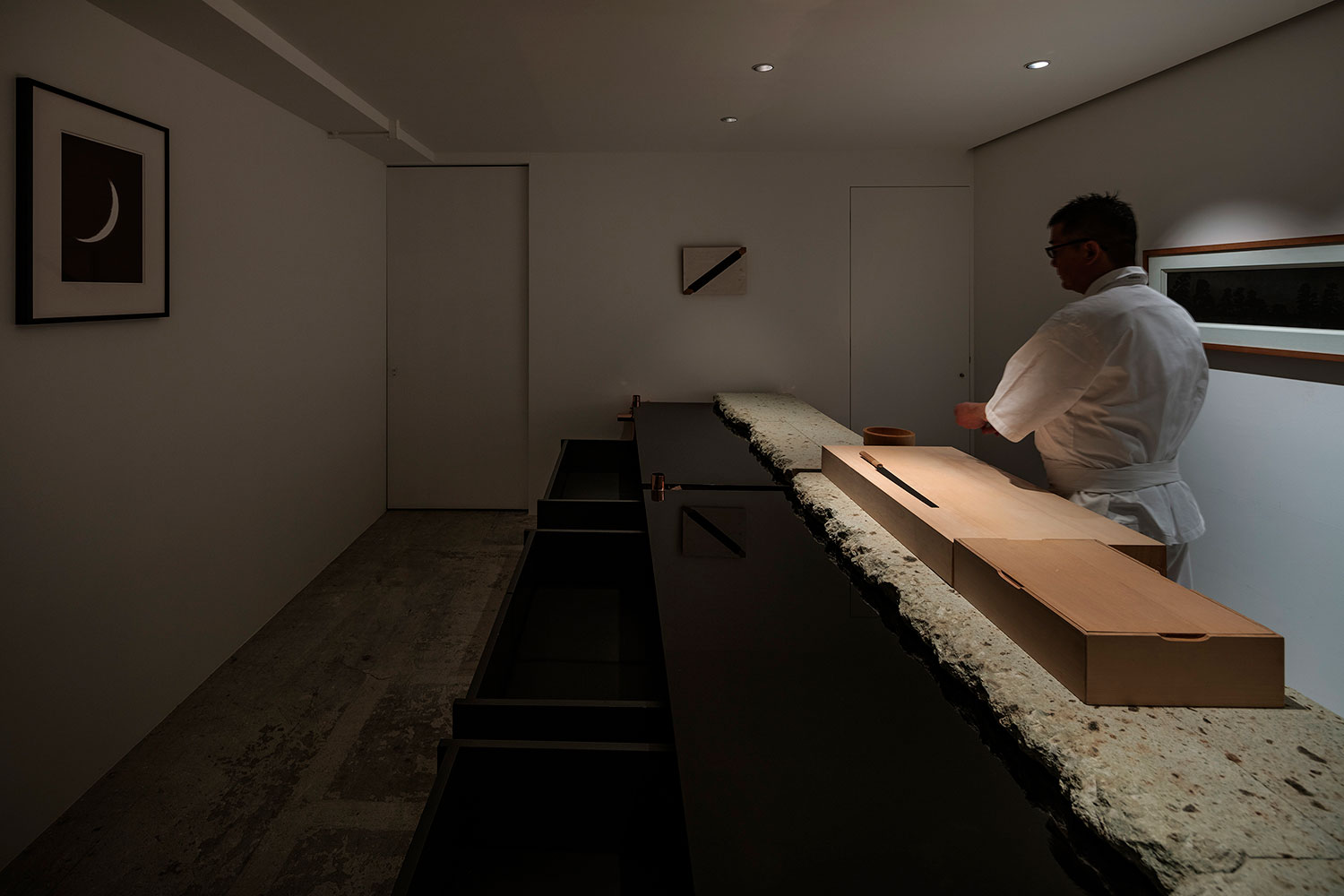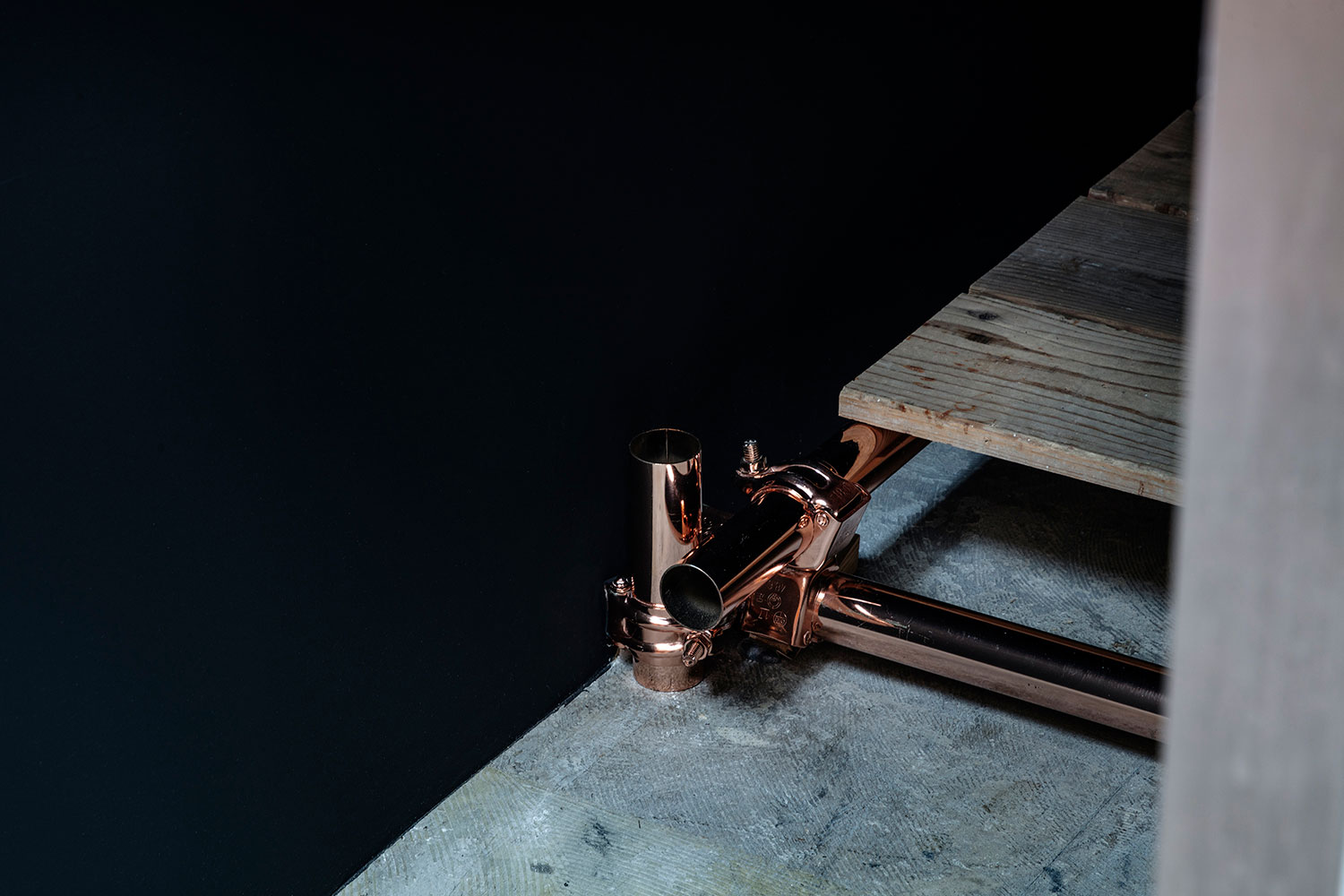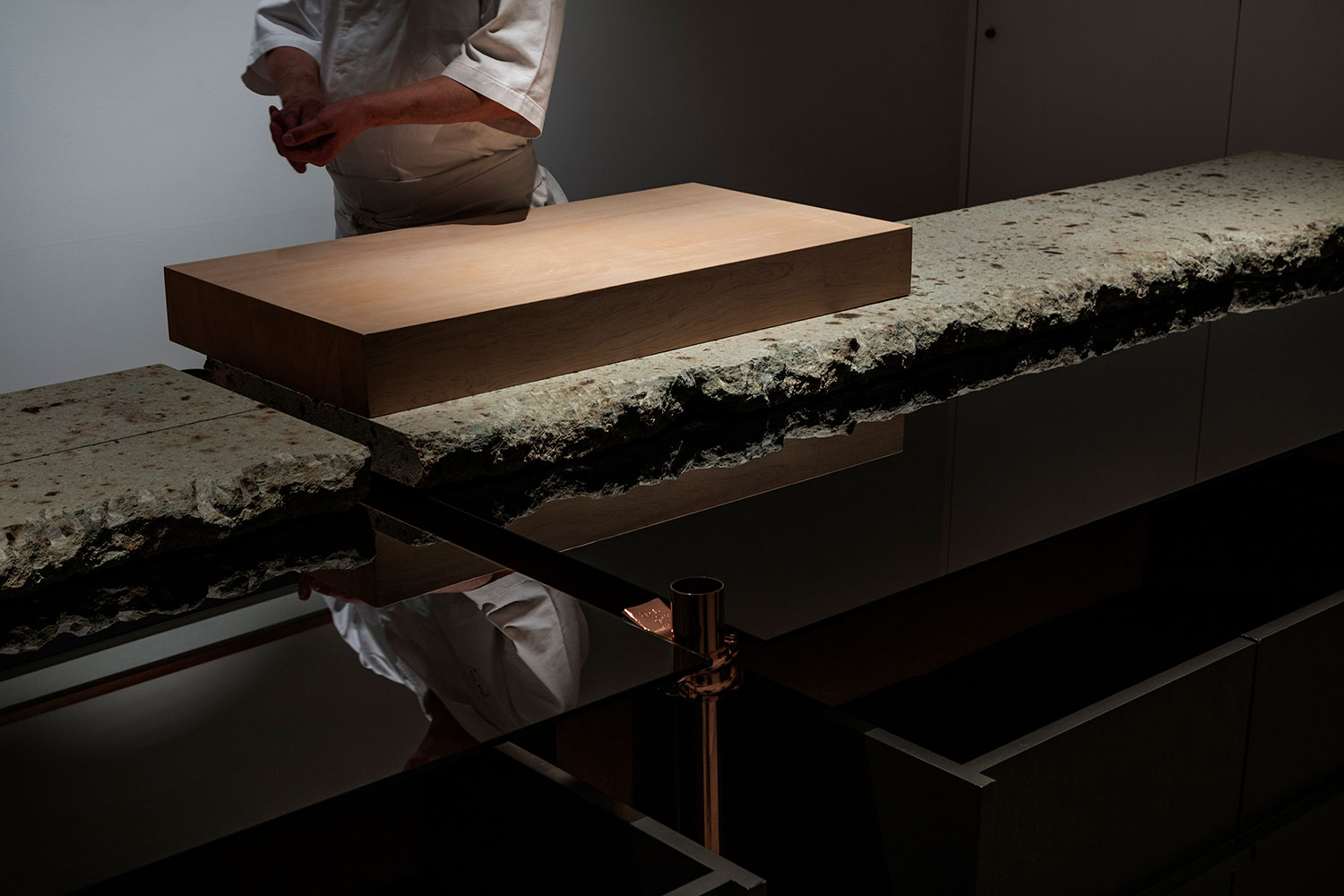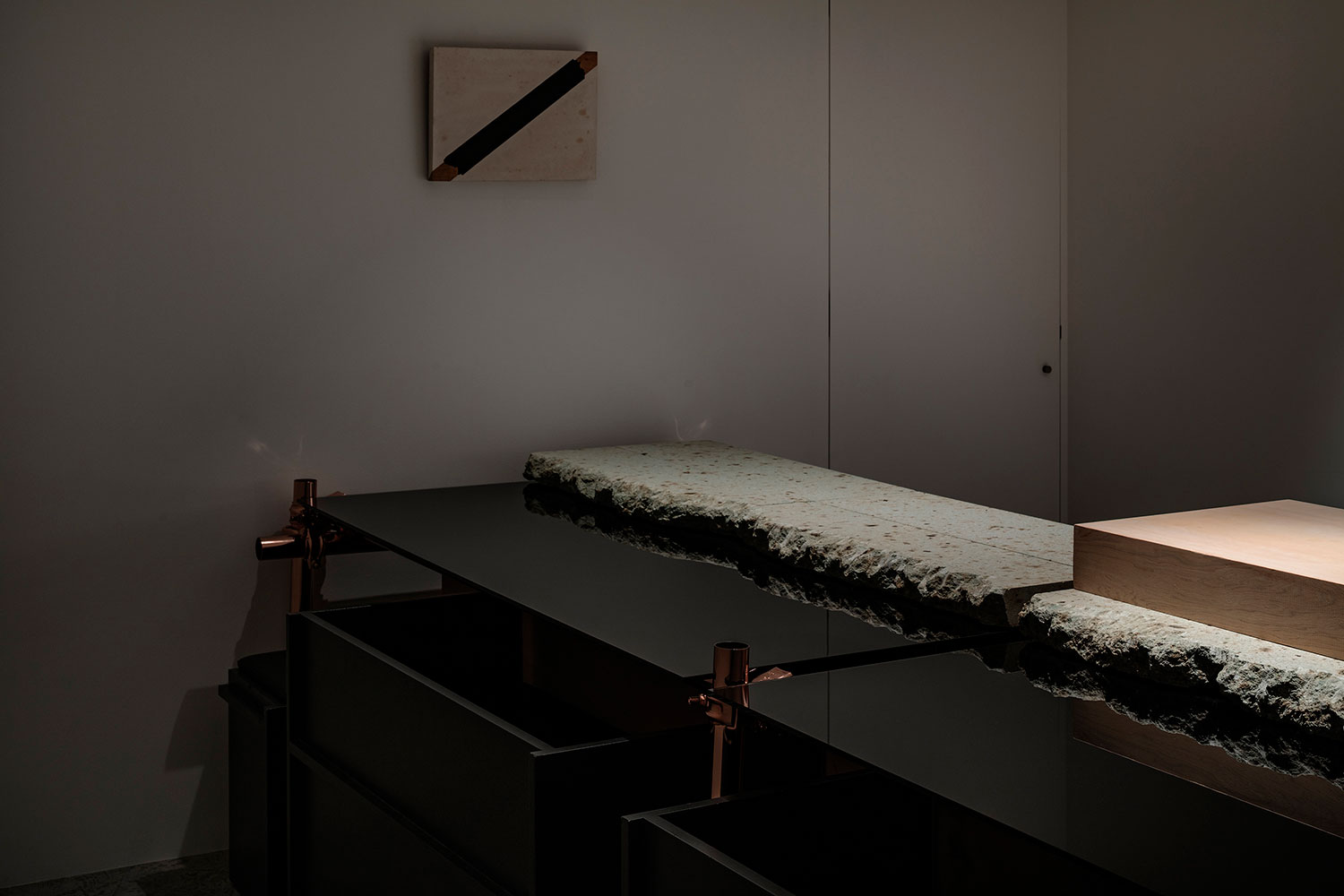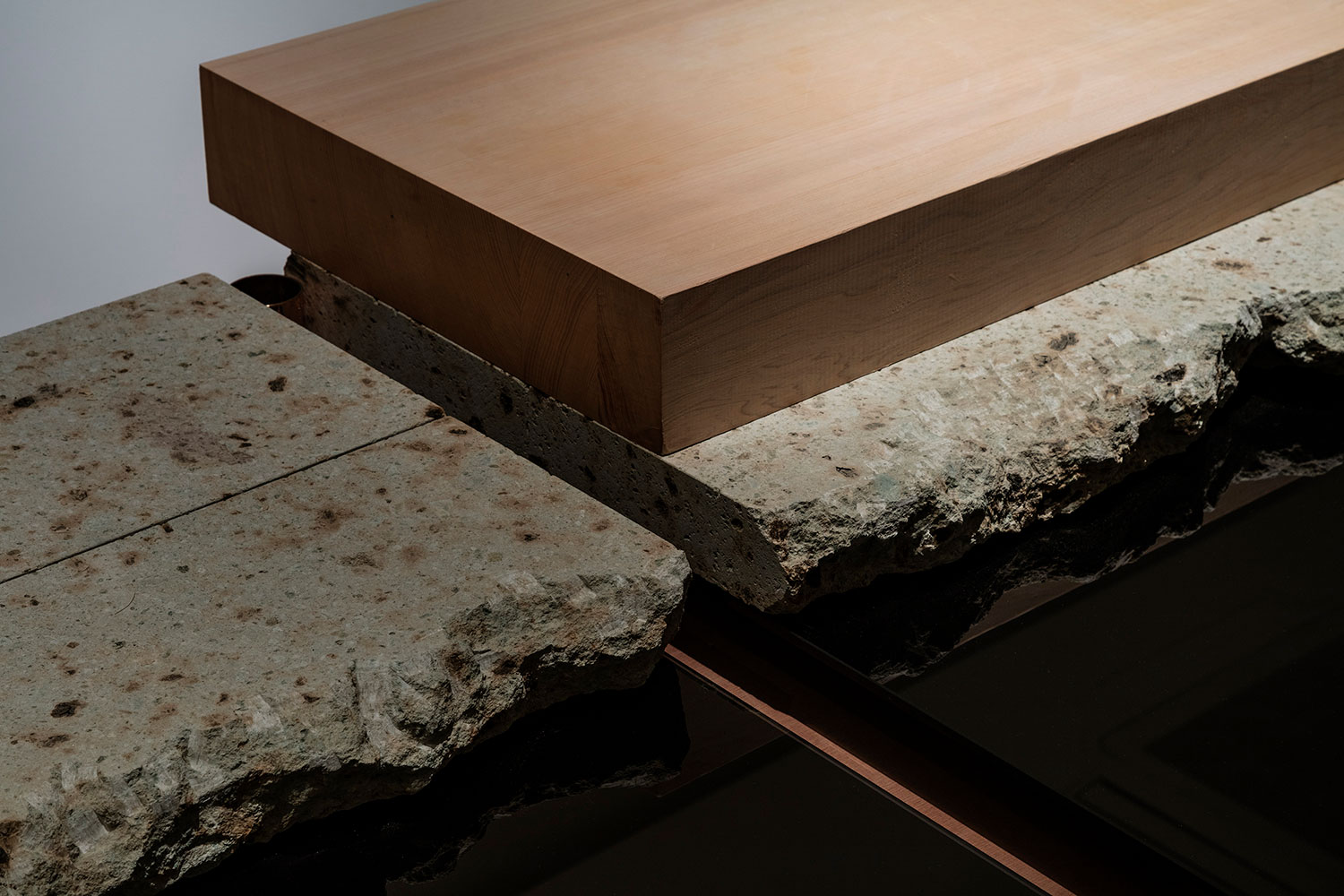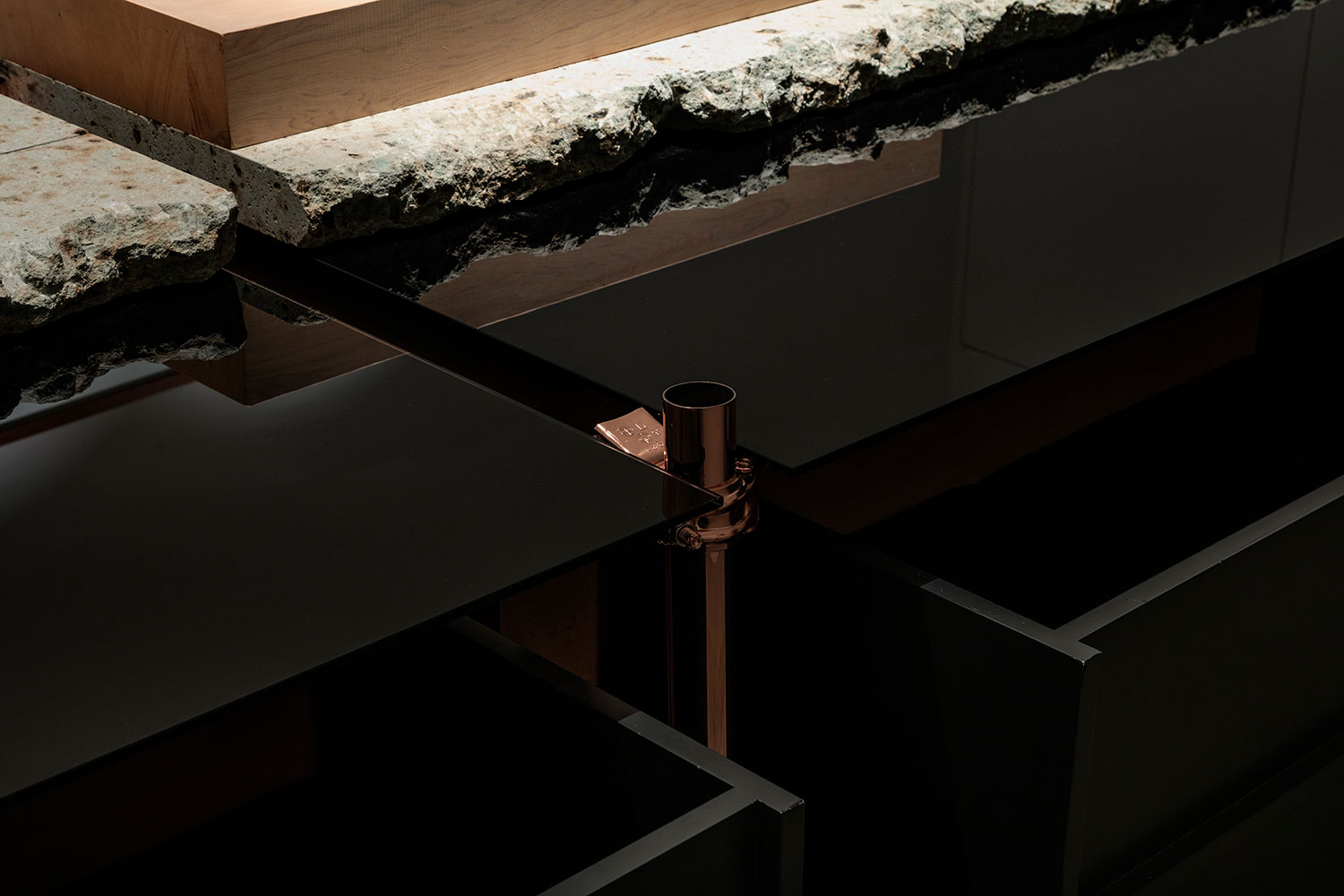Sushi Yoshii is a minimalist interior located in Tokyo, Japan, designed by DDAA. Sushi Yoshii is located on the backstreet in Aoyama, a block away from Omotesando. The shop sign is quite discreet. Guests enter the restaurant through a dark corridor and find a tsukubai (“stoop basin” or a low basin used to wash hands in a tea garden) lit by a spotlight. After washing hands, they go inside and catch sight of Hiroshi Sugimoto’s work on the front wall. According to Rosanjin Kitaoji, people used to eat sushi standing up until the end of World War II when they started eating them sitting on chairs. Inspired by the origin of sushi which had started out as food served in standing-up food stalls, the restaurant is dimly lit and only a contemporary artwork and the chef’s every single move are illuminated by spotlights. Guests immerse themselves in the “Sushi Yoshii experience” where they savor expertly prepared sushi with superb sake while appreciating contemporary art and the chef’s beautiful demeanor at the same time.
Respecting the origin of sushi restaurant as a food stall, Sushi Yoshii moves to a new place every few years and we were commissioned to design their third restaurant. Just like participating in “renga” (linked verse), we took over the style and concept of the previous restaurant in designing this restaurant. What was handed down to us were a dark entryway and aged scaffolding planks previously used as a countertop. This time, scaffolding planks, laid along the entryway, serve their original use as “scaffolding planks”. They are supported by copper-plated steel scaffolding pipes. We carefully altered finishes on these materials while using them for the originally intended uses. Copper-plated steel pipes are also used to make a table. Based on the idea that minimally processed “pure” materials would be most appropriate for the tabletop, high-gloss glass is overlaid on top of a block of Oyaishi stone with hammered edges to create a contrasting effect like a sharply cut sushi topping on fluffy white rice.
Photography by Kenta Hasegawa
